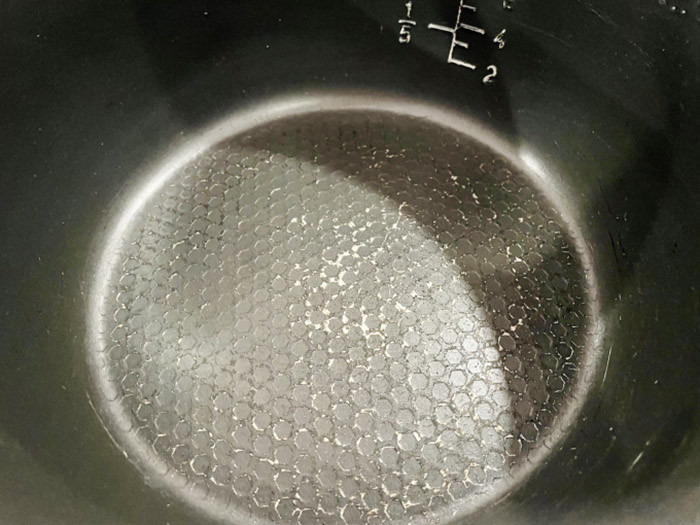Anyone who uses a rice cooker may encounter a problem with the pot being scratched, along with the concern of whether it is still safe?
The core of a conventional rice cooker is made of metal (mainly aluminum), which has good heat conduction. The surface of the aluminum core is often coated with a non-stick layer to prevent rice from sticking to the pot after cooking, called teflon.
Teflon is an inert material that does not react with the rice in the pot when cooking. The Teflon coating will begin to deteriorate when heated between 230 and 260 degrees Celsius and decompose above 350 degrees Celsius.
A study by the University of Newcastle and Flinders University (Australia) showed that just a small scratch on the non-stick coating can release about 9,100 plastic particles during cooking. If the non-stick coating is damaged, a few millimeters in size or larger, it will release 2.3 million microplastic and nanoplastic particles that can penetrate into food.

Experts recommend replacing the pot core that has peeled off the non-stick coating.
According to Dr. Vu Thi Tan (Hanoi University of Science and Technology), when the core is scratched, the teflon coating will peel off and mix with the rice. Fortunately, the maximum temperature of a rice cooker is 100 degrees Celsius, above which the cooker will automatically turn off or keep warm. This means that when cooking rice (100 degrees Celsius), teflon does not decompose. If accidentally eaten, this inert substance does not react with the body's cells but is eliminated.
The most harmful thing is misuse. Some families use the inner pot of the rice cooker to cook, fry at high temperatures, causing the Teflon to decompose strongly. It is especially dangerous to use the inner pot to cook sour foods, because acidic foods will easily corrode the metal layer.
Dr. Tan advises that Teflon is like microplastic, once the non-stick coating has peeled off, it should no longer be used to cook rice.
According to VnExpress